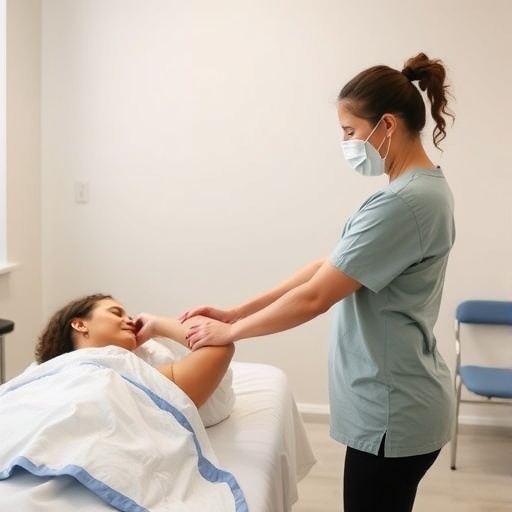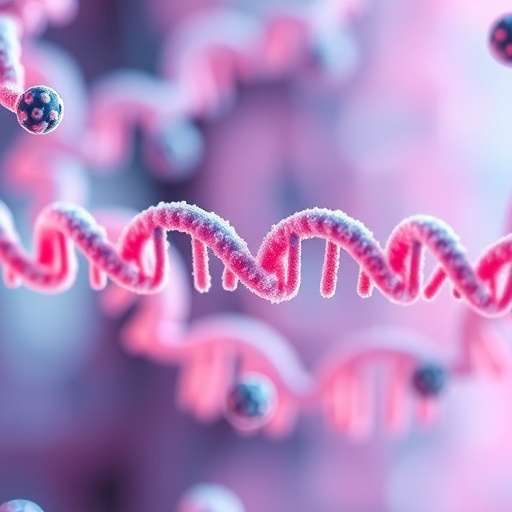(PHILADELPHIA) – Lassa fever belongs to the same class of hemorrhagic fevers as Ebola. Like Ebola, it has been a major health threat in Western Africa, infecting 100,000-300,000 people and killing 5,000 per year. A new vaccine against both rabies and Lassa has demonstrated effective protection in animal models of disease, according to research publishing in the journal Nature Communications, on October 11th. The research also points to a new way to test for protection against the virus, a finding that could significantly speed vaccine development in humans.
"This two-component vaccine showed good protection from exposure to both virus types in preliminary animal studies," said senior author Matthias Schnell, Chair of the Department of Microbiology and Immunology at Jefferson (Philadelphia University + Thomas Jefferson University) and Director of the Jefferson Vaccine Center. Because the vaccine is inactivated and based on a rabies vaccine that has been used for decades, the safety profile of the combination vaccine is excellent and likely safe enough to administer to pregnant women, who have a high risk of miscarriage when infected with Lassa virus. In addition, it can be likely produced in a stable lyophilized format that is easy to use in clinics that lack refrigeration.
"Perhaps more importantly, however, we've discovered how to test for protection, which could vastly improve our ability to translate these findings into a human-ready vaccine," said Dr. Schnell.
The results suggest a change in how researchers will analyze for potency in Lassa virus vaccine development, and could have implications for other hemorrhagic fever viruses as well.
Because it would be unethical to test vaccine efficacy by intentionally exposing people to a pathogen, vaccine researchers instead test for so-called surrogates of immunity, a proxy for immune protection, based on results from animal studies.
One of the most common surrogates for vaccines against viral pathogens is the neutralizing antibody – one of the antibodies made during an immune reaction that binds and blocks the part of the virus that helps it enter and infect cells. "The neutralizing antibody works like putting glue on a key," says first author Tiago Abreu-Mota, MD/PhD student in Dr. Schnell's lab visiting from University of Minho, Portugal. "By junking-up the key, or entry molecule, the virus can no longer open the door to the cell."
Although the immune response generates antibodies that fight infection in other ways, the neutralizing antibody has been something of a gold standard in vaccine development. High levels are usually a good indication that the immune reaction is strong enough to deflect viral disease.
In the case of Lassa virus, however, neutralizing antibodies have not been very good surrogates, since they are produced in much lower quantities.
Dr. Schnell, together with colleagues from the National Institutes of Allergy and Infectious Disease (NIAID) and University of California, San Diego (UCSD), looked at antibodies against other parts of the Lassa virus glycoprotein. Although these antibodies can't block the infection, the researchers showed that in the case of Lassa, they can be quite effective at tagging the virus or virus-infected cell with a beacon for quicker identification by other immune defense cells, such as the natural killer immune cell.
The researchers used this concept to develop a new test to quantify the number of cells killed by antibody tagging/NK cell attack, creating a new surrogate of protection against Lassa virus hemorrhagic disease, based on flow cytometry. They also showed that a certain class of IgG against Lassa virus is beneficial.
The new surrogate of protection will aid in the development of a more potent vaccine against Lassa virus. The researchers are also exploring other approaches to help determine vaccine protection in the field.
###
This work was supported in part by NIH grants R01 AI105204, by the Jefferson Vaccine Center and by the Portuguese Foundation for Science and Technology fellowship PD/BD/105847/2014. This work was also funded in part through the NIAID Division of Intramural Research and the NIAID Division of Clinical Research, Battelle Memorial Institute's prime contract with the US National Institute of Allergy and Infectious Diseases (NIAID) under Contract No. HHSN272200700016I and an NIH grant in aid (AI110700). Tiago Abreu-Mota, Peter B. Jahrling, and Matthias J. Schnell are inventors on the U.S. Provisional Patent Application No. 62/691,413. All other authors declare no competing interests.
Article Reference: Tiago Abreu-Mota Katie R. Hagen, Kurt Cooper, Peter B. Jahrling, Gene Tan, Christoph Wirblich, Reed F. Johnson, and Matthias J. Schnell, "Non-neutralizing antibodies elicited by recombinant Lassa-Rabies vaccine are critical for protection against Lassa Fever," Nat Comms, DOI: 10.1038/s41467-018-06741-w, 2018.
Media Contact: Edyta Zielinska, [email protected], 215-955-7359.
Media Contact
Edyta Zielinska
[email protected]
215-955-7359
@JeffersonUniv
http://www.jefferson.edu/
http://dx.doi.org/10.1038/s41467-018-06741-w




